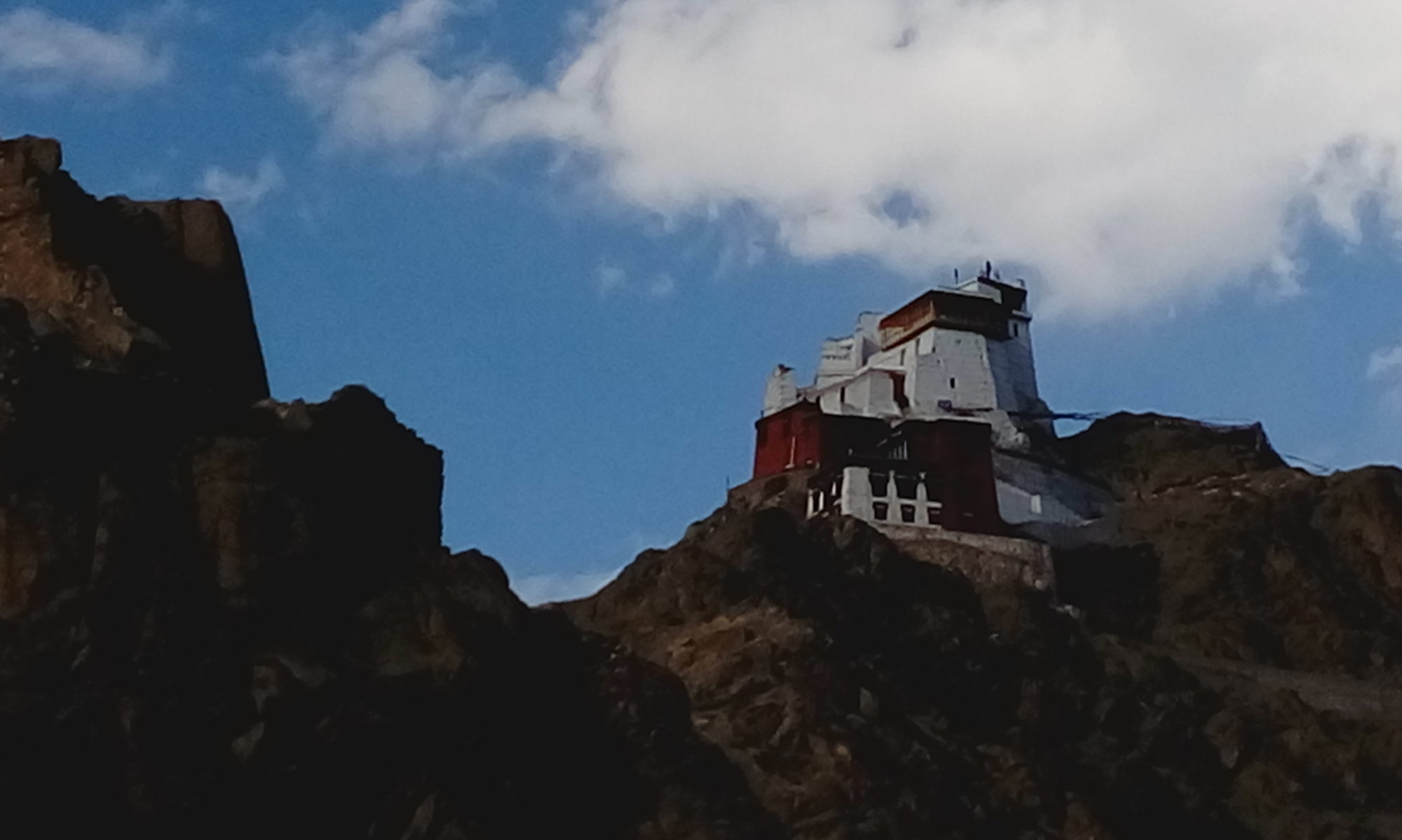The other day we went to the National Museum to catch an exhibition. While waiting in the foyer for the rest of the group to assemble we took a look around at some of the sculptures on display. (‘Whatever- o’clock- sharp’ is never sharp enough. Its always plus a few more minutes. Everybody, infact every place has it’s own ‘standard time’ and Indian Standard Time is almost always an approximation. I mean what are a few minutes when we talk centuries, nay, epochs in this ancient land! ) We see sculptures dating back to the 12th century. Wow! So old! 9th century. Oh my God! That’s ancient! 15th century. Hmm, okay. Behold the diminutive ‘Dancing Girl” in the Indus Valley Civilization section. 2500 BC. The very one whose pictures we grew up seeing in our school text books. Gobsmacked! Kindly stop gaping and move on to the next exhibit…
Explore another place in a time warp in- Part One- On the Wild Side of Outstanding Orchha
Although I don’t recall seeing any exhibit from the almost thousand year old Ajanta-Ellora cave complexes in the museum, my first memory of an Ajanta painting was when decades back, one exploratory afternoon while the adults took their siesta, I decided to investigate the contents the drawing-room in my grandfather’s house. The beautiful french-windowed room was tacitly out of bounds for us. Studying the pair of figures painted on cloth & framed, on either side of the windows, I recall finding them innocuously out of place in that mountainous setting. The mocha skinned, languidly posed couple with their strange hairdos & exotic clothing looked regal alright, but definitely not local. I wondered at their origins after my first art appreciation class of sorts. History lessons in school shed some more light in the years to come.
The Ajanta-Ellora caves despite being on the UNESCO World Heritage Site list have never featured in my list of go-to places. Maybe it’s something to do with caves…never been too enthusiastic about what one visualizes to be dark dingy places, never mind the treasures found within! But since we were in the vicinity & now as conscientious parents we feel the child must be exposed to history & art in it’s natural dwelling. So we set off early in the morning, to beat the heat that the stone cut caves start radiating even in winter, from Aurangabad, which is about 100 kms away. The old, tree lined highway is being widened & the way is littered with the remnants of the living history which is what I think trees are, exposing carcasses of roots, some the size of our vehicle. The end of an era of old canopied routes providing travelers with shade & succor in the pre-airconditioned days.
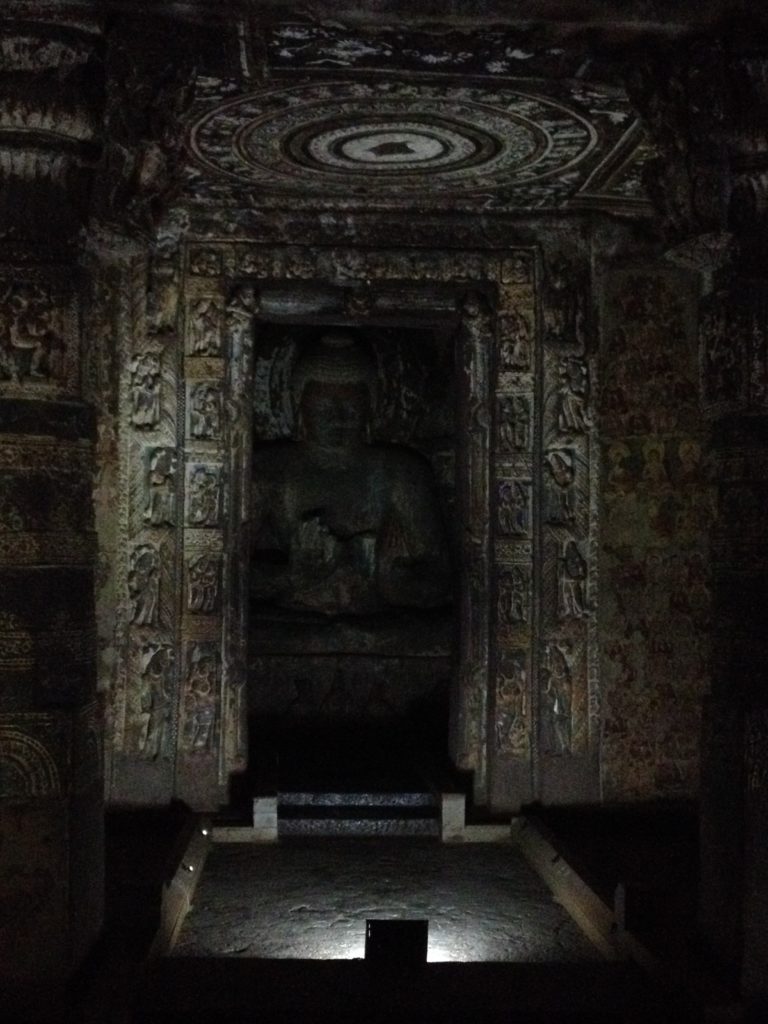
A short bus ride takes us from the parking near the Visitor Centre, which has been developed with Japanese aid, to the winding shallow gorge drained by the Waghora river where the caves have been carved out of the horseshoe shaped side of the gorge. It seems to preserve the immediate environs of the caves & adds to their aura of remoteness, although there is a full fledged restaurant ( Which we are more appreciative of at the end of our round of the caves!) loos and the ticketing counter near the caves, where we disembark.
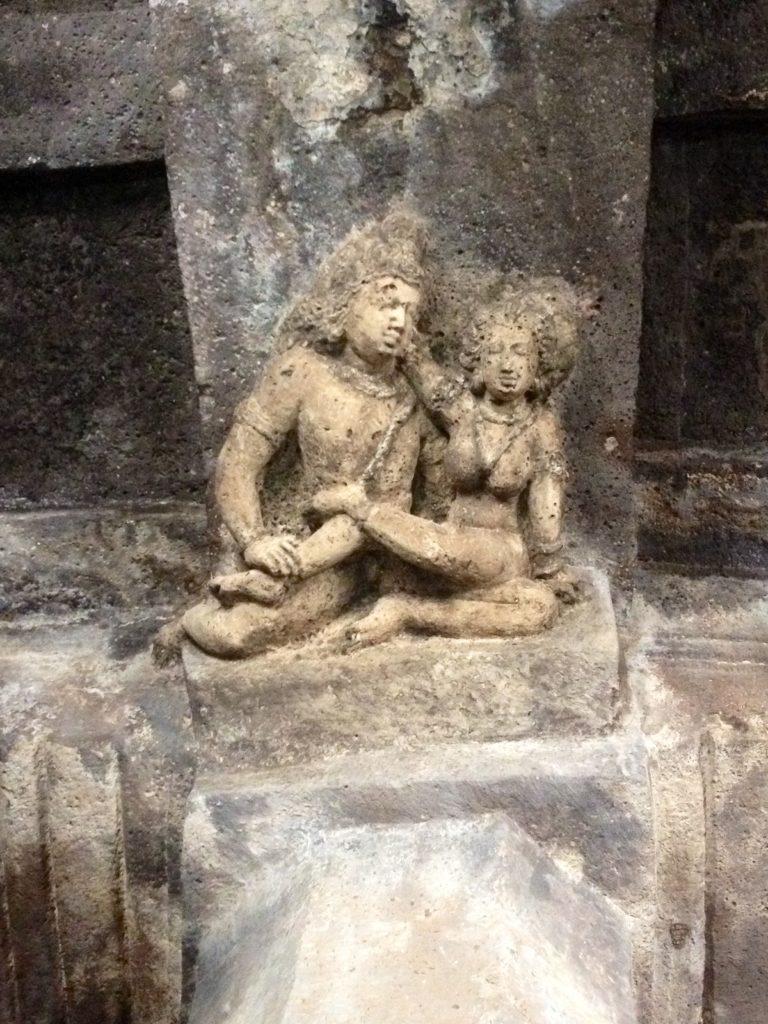
An entrance cut into a jutting outcrop sets the mood right away as we make our way into the caves one by one. The initial caves seem to focus more on wall paintings & the latter on sculptures. There is a wide courtyard initially & the caves have elaborate, towering facades. They are not dingy! Where there is paucity of natural light, diffused lighting has been provided along with wooden flooring & railings in some as well. It all illuminates the luxuriant murals that cover every inch of the walls. The masterpieces of Indian art not only depict the life of Buddha & stories from the Jataka tales but are also a visual commentary on the life & times of the kings & other patrons of this entire endeavour. The guide points out the exotic visitors discernible by their different attire in the artwork, giving a glimpse of the intrepid travelers of yore. The ceilings are painted with elaborate motifs, the pillars are colonnaded and in some caves instead of Buddha’s statues there are perfectly symmetrical Stupas. Cave after cave has an aura of opulent celebration of life & of ascetic piety in equal measure & finally in Cave 1, I lay eyes on the original frescoes which inspired the copies on our drawing room wall. Here too, the masterpieces are on either side of the door to the inner sanctum giving a vague deja vu feeling. They are in parts sensuous & spiritual, utterly indolent…and now they have names – bodhisattva Padmapani & Vajrapani. Names as lyrical & flowing as the larger than life figures themselves…
Discover vivid and well preserved frescoes in –Part Two – The Old Gold in Outstanding Orchha
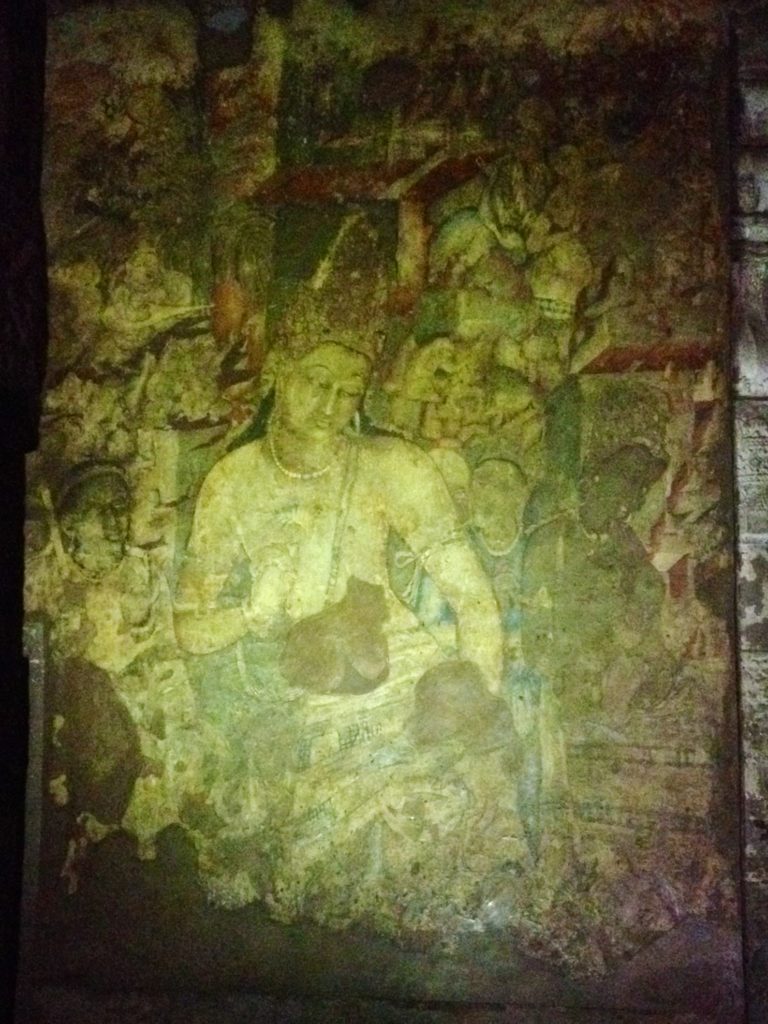
We take a breather in the cool veranda of the upper storey of Cave number 6 (Why are the stairs so steep in all these ancient stone structures? Absolute workout for the legs!) to replenish the child’s sagging energy & interest levels. Places like these can become too much to assimilate in one continuous go even for adults. As one tries to mentally teleport oneself back almost a thousand years to this bend in the river in the middle of a forested nowhere & visualize the painstaking chiseling to create, decorate the caves, the masters creating their art, the monks going about their lives here in the various Chaitya-grihas & Viharas centuries back, the antiquity & the magnitude of this cave complex gets more magnified. Its a strangely humbling experience.
Explore the monastery of Diskit in-Nubra Valley – Forging our own path
The hyphenated caves of Ajanta- Ellora are actually about 100 kms apart & in different directions from Aurangabad. The Ellora cave complex is about 30 kms from Aurangabad. After our sojourn to the Ajanta caves that evening we decide to visit the Biwi ka Maqbara in Aurangabad. We get hopelessly lost in this maze of narrow lanes because as we discover later the child has changed the GPS setting of the map to the shortest route & that is like I read somewhere, the fastest way to a place you don’t want to go to! I mean eventually we get to our destination & the lateness of the hour ensures that the full moon is out in it’s glory, swathing the monument in flattering light & making the entire place way more beautiful than what it must be in stark sunlight & enroute we make another discovery – bakeries with mounds of ‘naan’. After crossing the third one we can’t contain ourselves & have to stop but asking for two only gets us strange looks from men taking them home by the dozens. The piping hot ‘naans’ have the most distinctive taste & don’t need any accompaniments. Polished off in five minutes flat!
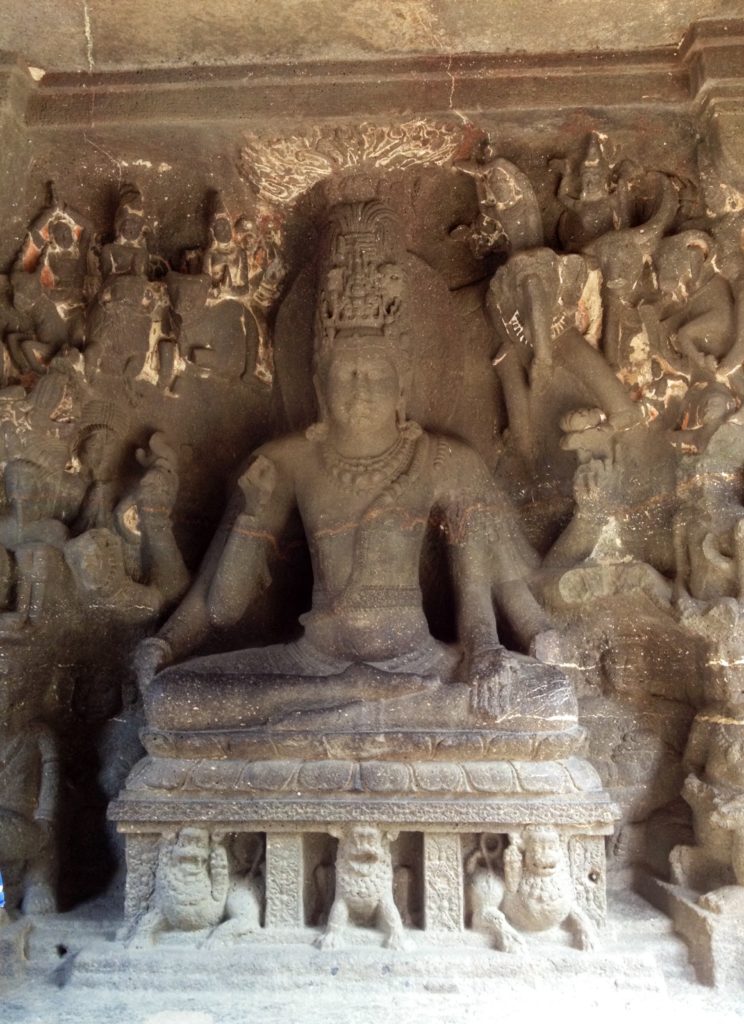
The next morning we drive to the Ellora caves. The drive would have taken lesser time but for the traffic jam at an old gateway in front of the Daulatabad fort. It was clearly meant to handle the width of an elephant or two at the most but not today’s traffic or the erratic drivers! The route still has vestiges of the old route with old Banyans lining the road & the difference from the previous day’s drive is stark. We cross Aurangzeb’s final resting place & shops selling the famous ‘Himroo” fabric before going down the hillside which houses the Buddhist, Jain & Hindu caves which make up the Ellora cave complex.
Read about two other places with fine fabrics and history in- Mandu and Maheshwar in the Monsoon Mist
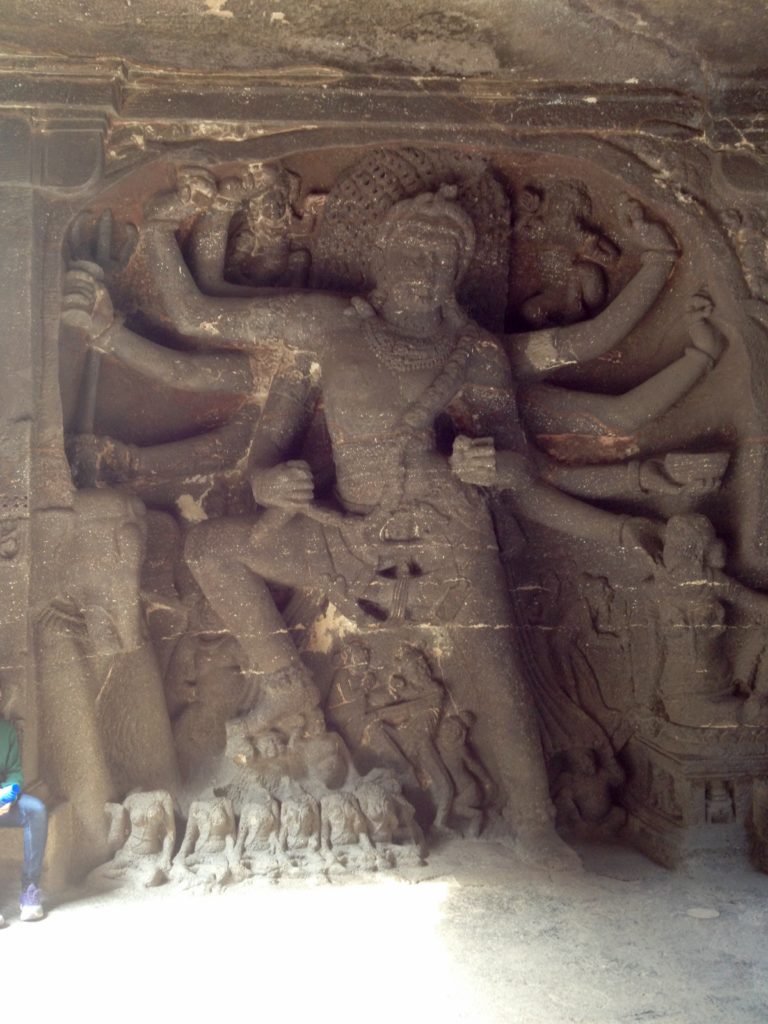
Its a short walk to the main Kailash temple at Ellora which seems to be the pièce de résistance of this place. No amount of reading up about the technical wizardry of it’s construction, the largest monolithic structure made top down cleaved from the hillside of basalt, can actually replace being there. As one walks through the entrance cut in the thick stone wall, the imposing structure hits you. All around grand gods imposing their literally larger than life presence, vitality in every pose take up all the space the rock walls can provide. The main structure is imaginatively carved with scenes from various mythological texts interspersed with plain rock so each one can be appreciated in it’s remaining entirety. But what blows my mind is this particular segment in the hall running in the hillside making up a natural wall around the main temple. It seems to depict a scene of an assembly of gods & goddesses. Seated as if partaking a ceremony in all their finery, the life sized figures seem to be frozen in stone exquisitely sculpted in fine detail. One particular slightly malevolent creature stands out sitting with feet firmly planted on a lesser mortal writhing below it, superbly carved showing all the frail mortality of man.
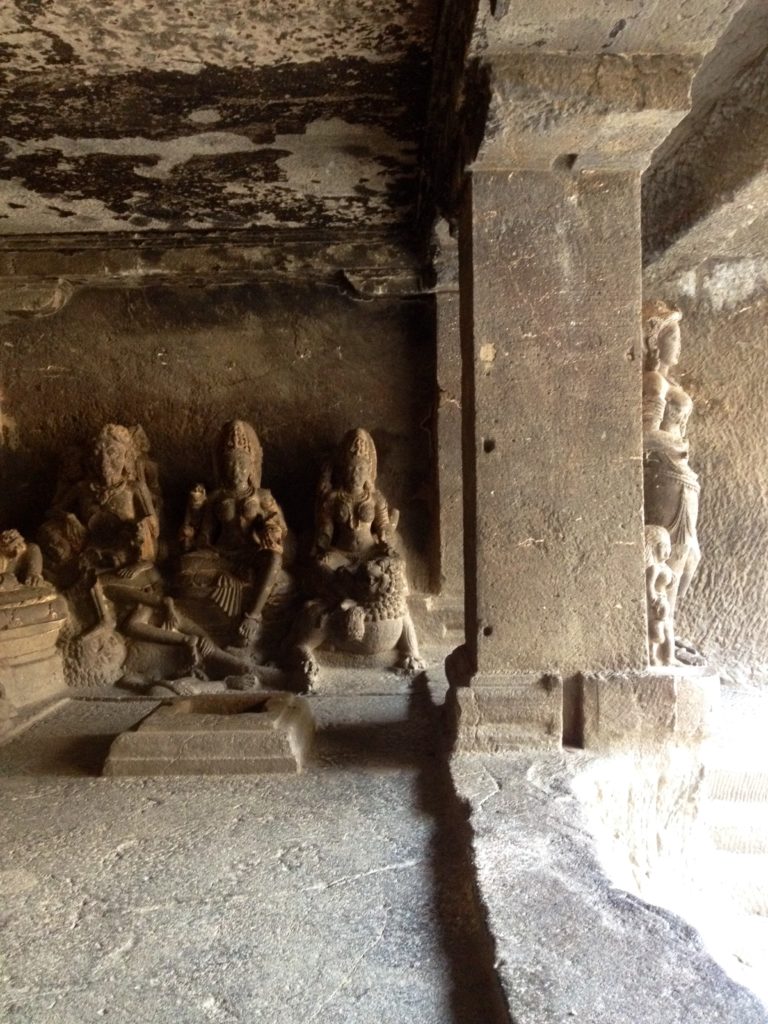
No book, photograph, painting or even the rich repository of some museum can bring out artwork in it’s accurate context unless experienced in it’s original surrounding. The whole place has a latent energy that dims the noise of the hordes of selfie-takers immersed in their own beauty. One leaves with a niggling feeling that maybe the gods were truly here.
